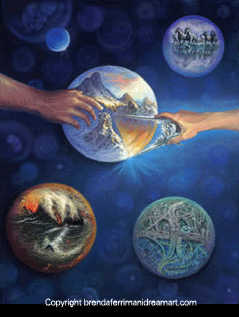|
[?]Subscribe To This Site
|
|
But what are dreams really all about?
To this day there is no accepted biological explanation to answer the question "what are dreams".
In the last decade however, with advancements in imaging techniques such as MRI our understanding of dreams has progressed.
For the first time we are able to see inside the sleeping brain and clearly see which areas of the brain are active during dream sleep. The question “what are dreams” is closer to being answered than ever before.
Observations in the sleep lab have shown that dreaming is associated with REM sleep .
Scientists now also know that the brain does not switch off when we sleep, it is actually re-awakened when we enter dream sleep. There is a difference between the sleeping and awake brain however. Only select parts of the brain are woken and are involved in dreaming.
Scientists also now know that dreaming primarily occurs in the limbic region of the brain or the area that deals with emotion.
Thus we seem to have an explanation for the highly emotional nature of dreams. For the latest information on dreams and the brain click here .
In the light of these new advancements recent research has produced several theories that attempt to answer the question “what are dreams”:
1. Continual-activation theory
This theory proposes that dreaming is a result of brain activity and synthesis and that dreaming and REM sleep are not one in the same but are controlled by different parts of the brain.
2. Researcher Eugen Tarnow believes that dreams are excitations of long term memory and that dreams take on the bizarre nature because of the format of long term memory.
3. A study in 2001 showed that dreaming is involved with strengthening semantic memories.
4. A research psychologist Joe Griffin in the UK has postulated the expectation fulfillment theory of dreaming.
According to this theory there are three principles of dreaming.
i) dreams are metaphorical interpretations of waking expectations.
ii) Expectations that produce emotional responses that are not acted upon during the day become dreams during sleep.
iii) Dreaming is a way of dealing with emotional arousal by completing the expectations in our dreams that we did not complete when awake and thereby freeing our brain to respond afresh to each new day.
These are a few of the many theories that attempt to answer the question "what are dreams" and no theory has to this day been proven.
Return from What are Dreams to the Home Page




